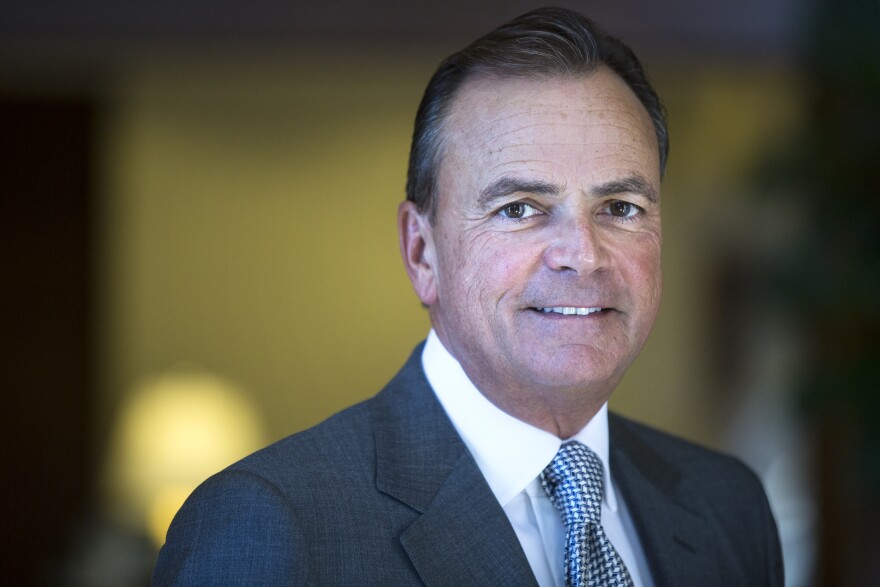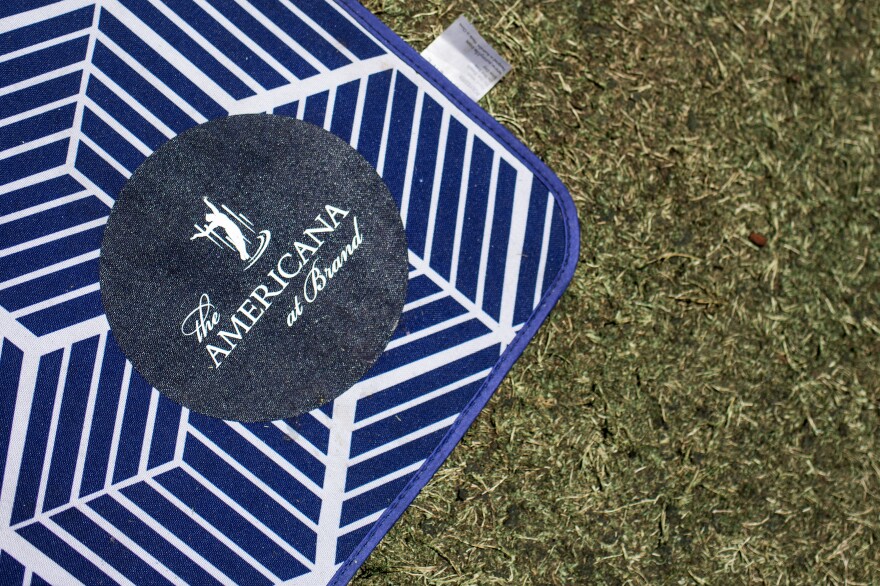This archival content was originally written for and published on KPCC.org. Keep in mind that links and images may no longer work — and references may be outdated.
Why there's a shopping center arms race in Los Angeles
Online stores are projected to ring in a record $94 billion in sales this holiday season, up 17 percent from last year. So it might seem strange that investors are pouring billions of dollars into renovating malls.
But that is exactly what is happening all over Southern California. In fact, there’s an arms race going on, for who can build the shopping center of the future, and yes, the future does include malls.
The Beverly Center is undergoing a $500 million remodel, the Westside Pavilion is planning an update, and Santa Monica Place underwent a $265 million overhaul that finished in 2010. Now it’s Westfield Century City’s turn. The shopping center is getting an $800 million renovation just a decade after it’s last major makeover.
“Most people who I know used to look at me like I was nuts," Peter Lowy, co-CEO and executive director of Westfield Corporation told a gathering of students at the UCLA Anderson School. "The question was: 'Who would tear down 75 percent of a perfectly working mall?'”
Under Lowy, Westfield has gotten rid of dozens of mediocre shopping centers, deciding to upgrade a few high-end ones.
“That’s a complete change in the nature of the company,” he said.
But it is a change that seems to be working. When Westfield bought the property in 2002, it recorded $200 million worth of sales a year. After re-opening next year, it is projected to ring up $1.3 billion in sales, according to Lowy.
All this comes as the percentage of goods bought online has nearly tripled in the last decade.
“If I had to guess, the internet business is going to grow to become 30-35 percent of retail,” said Mark Cohen, director of retail studies at Columbia University.
That’s a big jump from the 8 percent we see today, but it still means most people will be shopping offline, and Cohen says it will be the discount and high-end malls that thrive.
“It’s the middle ground that will continue to die on the vine,” said Cohen.
Cohen says the death of traditional malls will only be hastened when many Macy’s and JCPenney’s stores close their doors in the coming years. Those have traditionally been the so-called anchor tenants that have brought people into malls. When they move out, it’s not clear what takes their place.
“These properties are just going to become less attractive to customers," said Cohen.
Sometime in the not too distant future we will look back at traditional malls as an anachronism – something that started with the post World War II move to the suburbs, peaked in 1990, and faded away, according to the billionaire Los Angeles developer Rick Caruso, whose properties include the Grove and the Americana at Brand.

“I think the future of the indoor mall is going to die a very slow death, which we’ve seen," said Caruso. "There’s less malls today, more and more are closing down, and sales per square foot have declined.”
At Caruso's properties there the usual Apple Stores and H&M's, but they are almost like a backdrop to the massive Vegas-like fountain and lush green lawn where customers picnic with the help of free towels, umbrellas and even sunscreen.
"When you compete only on price, it’s a race to the bottom because how far can you cut the price?" asked Caruso. "It has to be about the experience."
Caruso's strategy is all about creating one that's compelling enough to lure people away from their computers because eventually they’ll spend money. That’s why eating – once relegated to dank food courts – has become so important; the hamburger chain Shake Shack recently opened across the street from the Americana. Another cult favorite, Eggslut, will open soon. In a coup, Westfield will have the first West Coast branch of Mario Batali’s fashionable gourmet food emporium, Eataly.

Nicole Jurado was relaxing on the Americana’s lush green lawn recently drinking a Frappuccino.
“I like shopping in stores because I like feeling the texture or looking at the item and be able to try it on myself, so I do 100 percent of my shopping in-person rather than online,” she said.
Jurado regularly comes to the Americana in Glendale even though she lives in Orange County. She says the experience makes it worth the drive.
Meanwhile, other investors are betting that traditional malls can survive, with some tweaks.
“We think there’s a great opportunity,” said Steve Plenge, managing partner at Pacific Retail, which manages more than $1.2 billion worth of U.S. shopping centers. “There’s a lot of pieces to a mall and there’s quite a bit of art to it.”
Plenge agrees with Lowy and Caruso that shoppers' experience will become more important, but he thinks he can do that smaller scale and without breaking the bank.
“One of the first things we do is renovate the restrooms," said Plenge. “We want people to go in – especially if it’s a mom with her kids – and have it be really clean and to have changing areas and nursing stations.”
Plenge has also upgraded food courts and added greenery and fountains.
"Every mall has a unique story," said Plenge. "It’s very hard to look at malls in generalities because every market and every development is different.”







